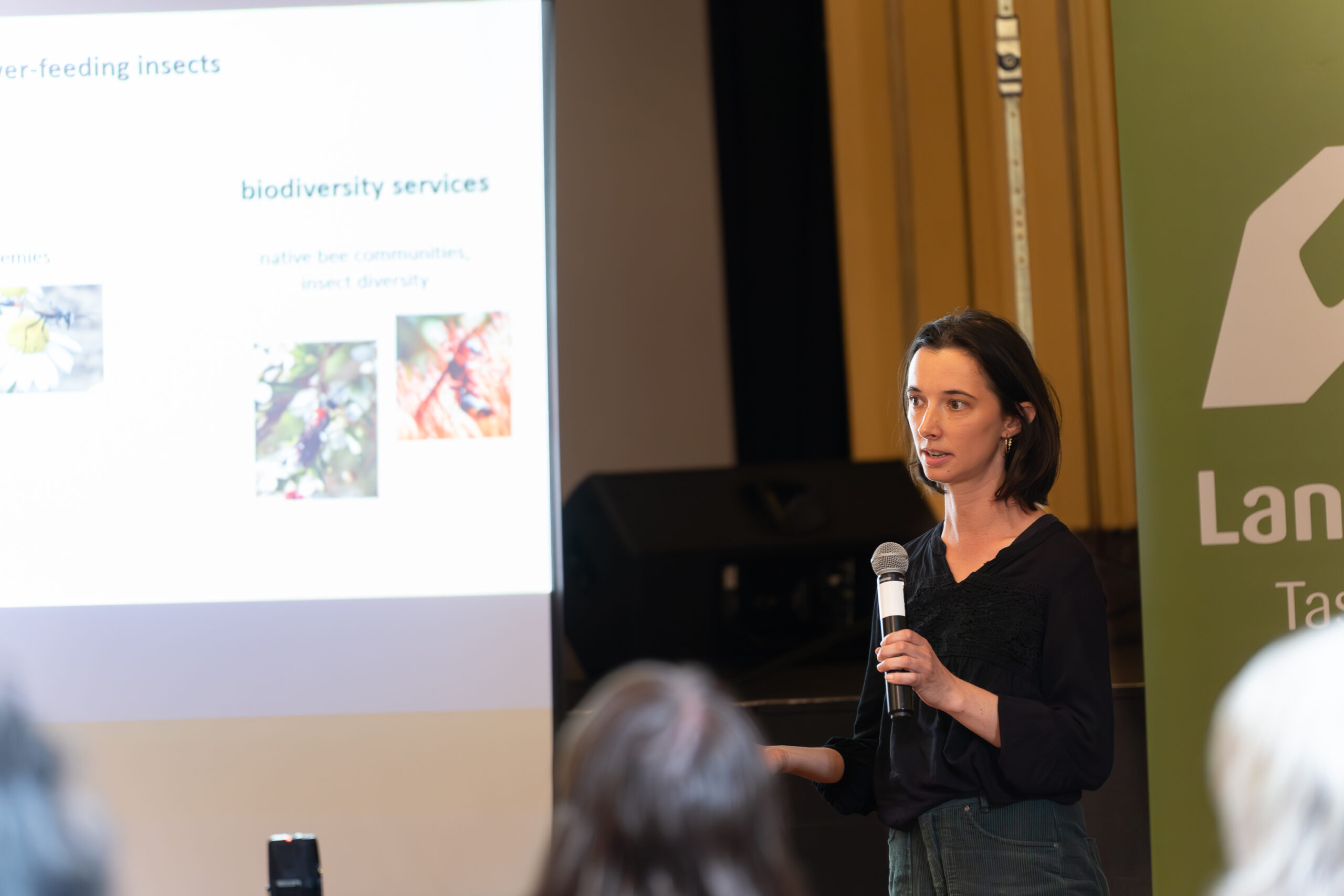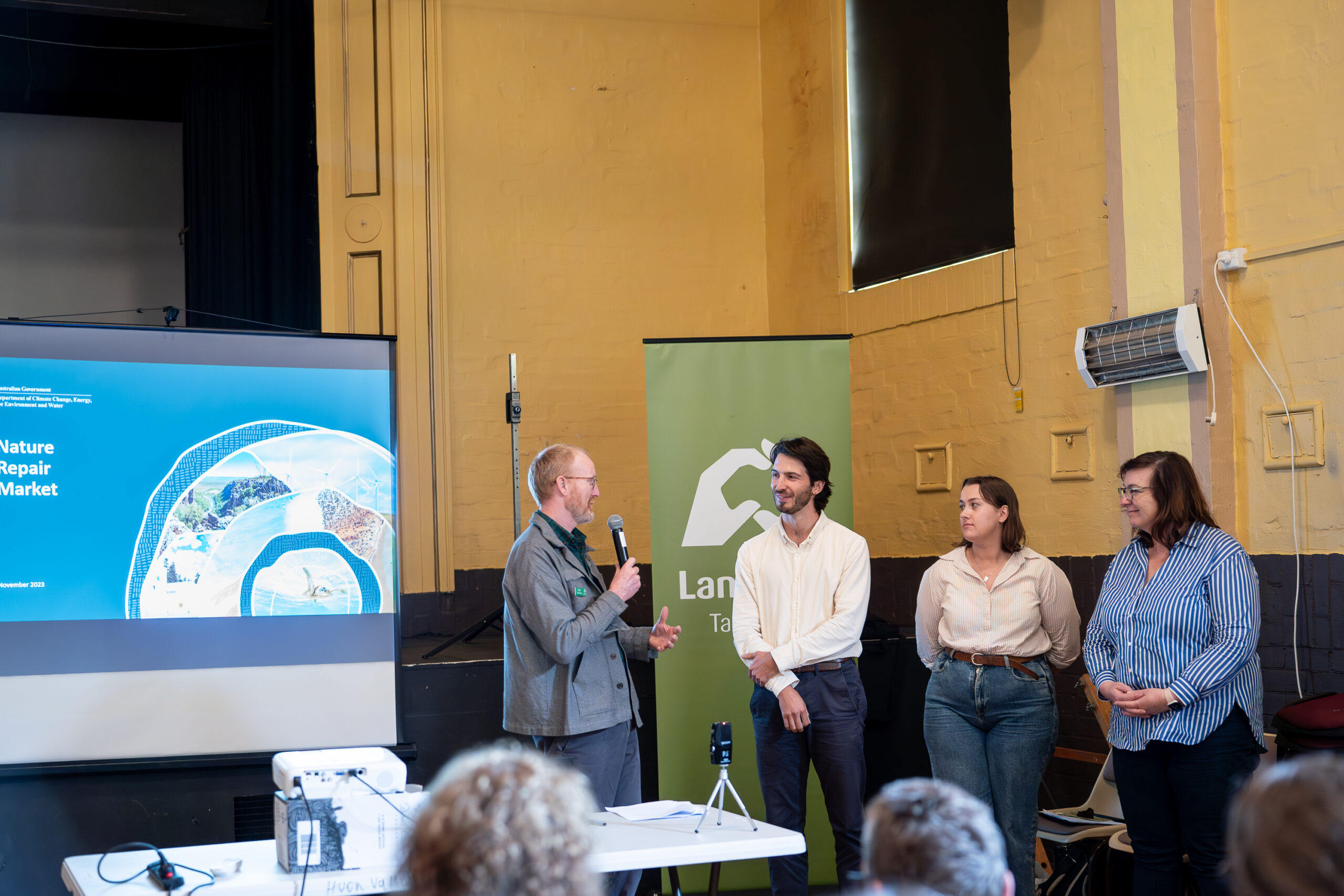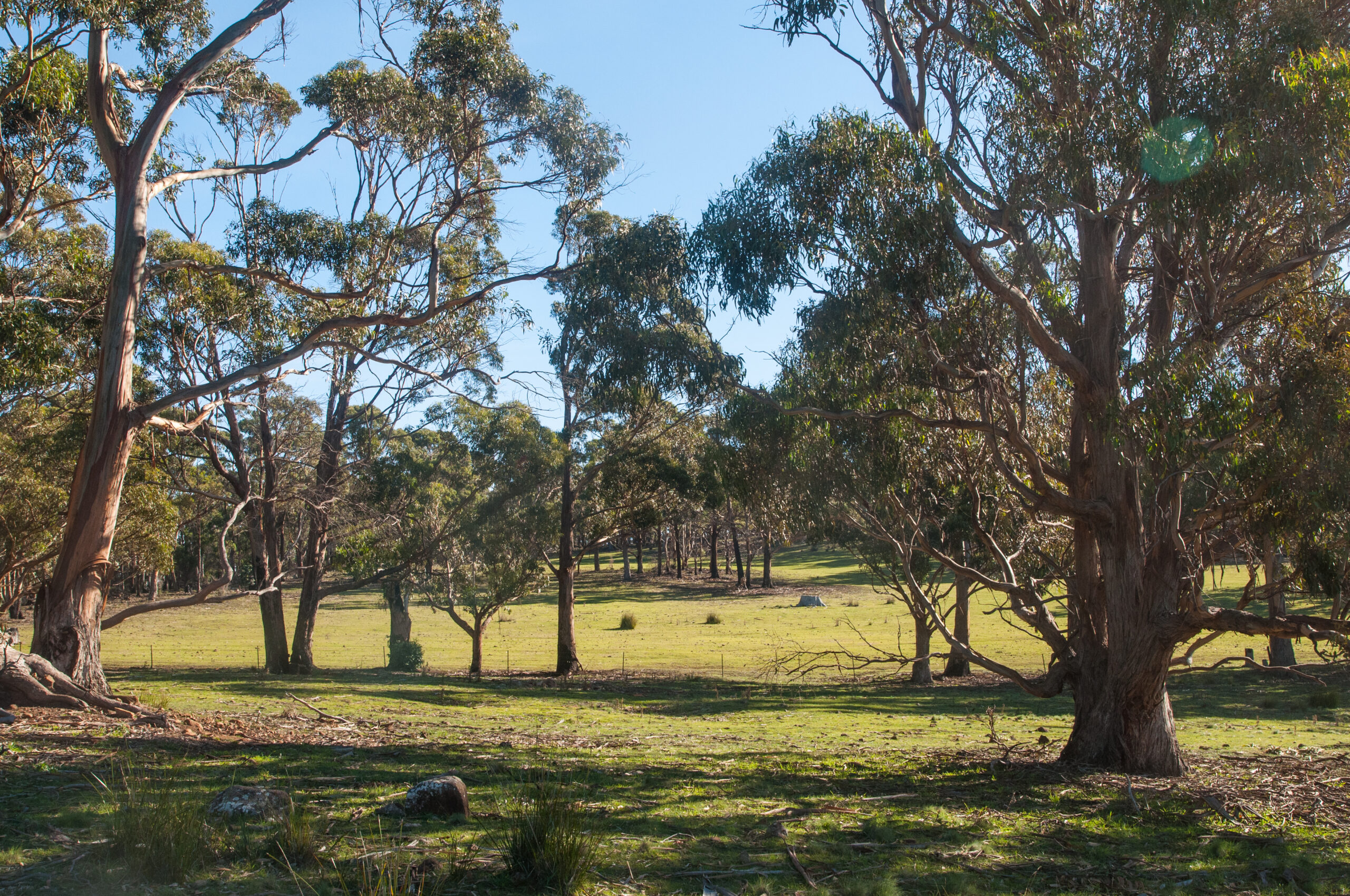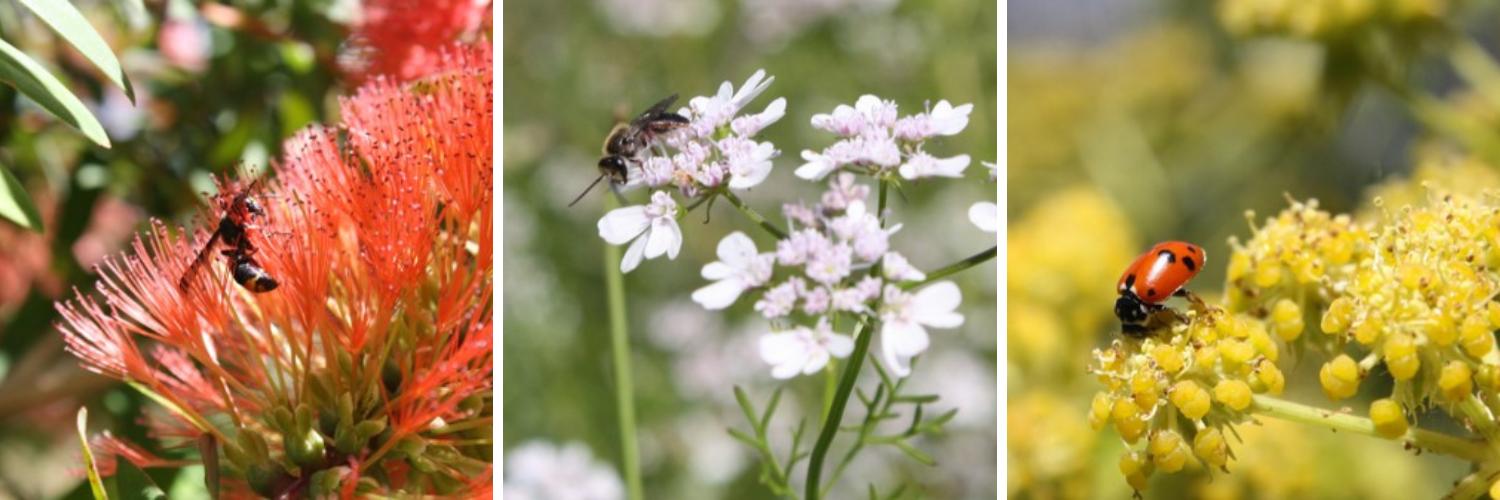In late November, Dr Yolanda Hanusch from our Land team spoke at Landcare Tasmania’s ‘Navigating Carbon and Biodiversity Markets’ event in Huonville. The event explored the co-benefits, barriers and common questions about emerging carbon and biodiversity markets, the benefits of monitoring biodiversity and carbon to inform management decisions, and the co-benefits of managing for carbon and biodiversity.
Consumer demand for carbon neutral and nature positive supply chains is on the rise and the Australian Government is designing market mechanisms to encourage development in environmental markets, which can be especially valuable for land managers. Not only can they provide economic return for good farm and land management practices, but good land management practices can lead to considerable co-benefits for biodiversity, productivity, efficiency and reduced carbon emissions.
Representatives from the Department of Climate Change, Energy, the Environment and Water also spoke at the event, providing detail and updates about the Nature Repair Bill as well as information about pilot studies on biodiversity projects (which NRM South has contributed to) and enhancing remnant vegetation projects.
Yolanda’s talk focused on the dual value of enhancing native vegetation around agricultural land. She discussed considering direct value to agricultural production (ecosystem services – shelter for livestock, protecting water) and greater biodiversity services. Having recently completed a PhD on the benefits of flower feeding insects in agricultural landscapes, Yolanda was able to draw on her data to talk specifically about ecosystem services, crop pollination and pest control as well as broader biodiversity services (encouraging rarer and more specialised native bees and other insects into agricultural landscapes). She also outlined the importance of developing regional resources and supporting producers so they can design their planting projects to get the best benefit for their agricultural enterprises alongside greater biodiversity benefits.
If you’re interested in finding out more about the role of native vegetation and beneficial insects in agricultural systems, we will be hosting a webinar on December 13, click here to register.




